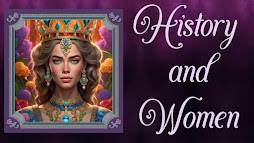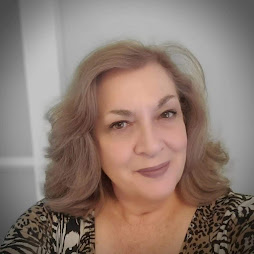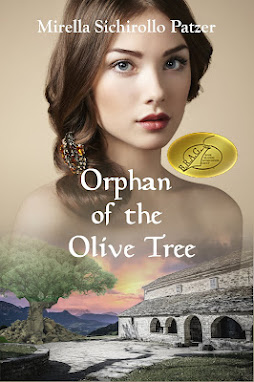Sacagawea (1788 - 1812)
Today, I find myself on vacation in Great Falls, Montana. We
bought a condo there several years ago and enjoy coming down at every
opportunity. Everywhere you go in this city, you encounter signs or street
names honoring the Lewis and Clark expedition when they searched for a route through the
Rocky Mountains to the Pacific Ocean in the early 1800’s. And the woman who led
that expedition was a woman named Sacagawea. As I walk the path along the shore
of the Missouri River, I think about her and what her life might have been
like.
Here is her story, told in her own words as I imagine she would speak them to us:
Sacagawea
I was born the daughter of a proud Shoshone chief in the
territory known as Idaho around the
year 1788. Translated, my name means Bird
Woman. My life was a happy one until I turned twelve. That was when
everything I knew and loved was taken from me. A raiding party of Hidatsa Indians killed the men, women, and
boys of our tribe, sparing only young women like me and my friend Naya Nuki. Terrified
and grieving, they took us to their village in North Dakota where we lived in
hardship as their slaves.
When I turned
thirteen, they sold me to a French-Canadian fur trapper named Toussaint
Charbonneau who lived in their village. Life with Toussaint was no better. He
was a brutal man who fled Manitoba after being stabbed in the act of
committing a rape upon a young woman. He already had another wife named Otter Woman,
also purchased or won in a gambling match. Life with Toussaint continued to be
difficult, if not impossible, but my yearning and hope to return home to my
family, to those I knew, and a life where I had been happy, kept me going. One
day, I vowed that I would return.
Toussaint Charbonneau
Soon I became pregnant with Toussaint’s child. It was during
this time that I met Captain Meriwether Lewis and Captain William Clark, men
who belonged to the Corps of Discovery and who spent the winter of 1804 in our
village. They needed interpreters for an expedition up the Missouri River which
they had planned for once winter’s snow and ice melted. Aware they would
encounter the Shoshone, they desperately needed an interpretor. When they found
out that I could speak the language, they immediately hired me with Toussaint in
tow. Otter Woman was to remain behind and wait for our return.
Lewis and Clark
Almost immediately we moved into their fort. As Clark got to
know me, he nicknamed me Janey. While we waited for spring, I went into labour.
I gave birth to a son on February 11, 1805. Toussaint named him Jean Baptiste
Charbonneau.
Sacagawea with Jean-Baptiste
With the winter thaw, and our expedition ready with
supplies, we headed up the Missouri River in flat bottomed boats called
pirogues. It was an arduous as we rode against the current. In May, our boat
capsized. I swam through the frigid waters rescuing what I could, including the
journals and records of Lewis and Clark. For that I earned their respect and
praise and named the Sacagawea River in my honor.
In the summer, we came upon a Shoshone tribe. Eager to
converse with them to trade for horses which we would need to cross the Rocky
Mountains, I was asked to interpret for the first time. Much to my surprise, as
I approached, it was my own brother who was chief. Also, I learned one of the
young girls who was kidnapped with me had managed to escape and found refuge
with my brother’s tribe. Our reunion was bittersweet, for I longed to return to
the folds of my family and the happy life I had once known. Instead, I remained
trapped, a virtual slave to a callous husband and the importance of the white
man’s mission. The need to be free kept burning in my soul. To repay Lewis and
Clark for reuniting me to him, Cameahwait not only donated all the horses
required, but he provided guides to lead our expedition over the bitter and desolate
Rocky Mountains.
Cameahwait Reunion
No one could anticipate the hardships we were to endure. Our
supplies dwindled and the cold set in with a vengeance. All we had to eat were tallow
candles. It was either that, or die. We chose to live. Soon, we had crossed and
began our descent to the other side. The weather warmed and I foraged for camas
roots. The root looked like onions and could be eaten raw or boiled or baked,
and the flavour was that of a sweet potato or pumpkin. I also preserved cooked
or sun-dried bulbs by pressing them into cakes called pasheco. Sometimes I
would make camas soup. In this way, we fought off starvation and regained our
strength.
Camas root
Soon we arrived at the Columbia River near the Pacific
coast. One of the Indians we encountered wore a beautiful robe made of 2 sea
otter skins. Captain Lewis and Captain Clark wanted the robe to present as a
gift to President Thomas Jefferson. I interpreted for them, but the owner did
not wish to relinquish the robe. Finally, I offered the blue beaded belt at my
waist in trade and he accepted. Once more, I had gained the white man’s admiration
and respect.
Bartering Blue Beads
When we arrived at the Pacific Ocean, we voted to build our
winter fort there. In the dead of winter, we learned of a whale’s carcass that
washed up on shore on a beach south of our location. Soon, we came upon land
familiar to me. I told Clark that I had been on these plains many times before
and
After the winter passed, it was time to return home. Once
again, we collected our supplies and headed east to trek across the Rocky
Mountains. When we approached the mountains, I recalled the plain where we
stood. I had been there frequently with the tribe of my childhood. I knew of a
gap in the mountains and led the expedition there (Gibsons Pass). From there I
took them into the Yellowstone river basin (Bozeman Pass).
Although known as a guide and interpreter for Lewis and
Clark’s expedition, in truth, I provided much more. My presence helped keep negotiations
with Indian tribes we encountered peaceful, for women were never present in war
parties. Had I not been on the expedition, the men would have died without my
knowledge of the camas root.
At the end of our journey, Clark wrote this to Toussaint:
"You have been a
long time with me and conducted your Self in Such a manner as to gain my
friendship, your woman who accompanied you that long dangerous and fatigueing
rout to the Pacific Ocian and back diserved a greater reward for her attention
and services on that rout than we had in our power to give her at the Mandans.
As to your little Son (my boy Pomp) you well know my fondness of him and my
anxiety to take him and raise him as my own child...If you are desposed to
accept either of my offers to you and will bring down you Son your famn [femme,
woman] Janey had best come along with you to take care of the boy untill I get him....Wishing
you and your family great success & with anxious expectations of seeing my
little danceing boy Baptiest I shall remain your Friend, William Clark"
After the expedition, Toussaint and I lived once more among
the Hidatsa. At Clark’s invitation, we moved to St. Louis Missouri in 1809. I
was happy to do so, for Clark enrolled our son, Jean-Baptiste in a boarding school
there. My son was to be educated like the white man, and I was proud.
A year later, a daughter Lizette was born to us, but soon, I
became ill and weak and suffered a putrid fever. I longed to return home, my hope
to be reunited with the Shoshone fading with each day.
Epilogue
Sacagawea died a year later at the age of 25. No one knows for certain the circumstances
of her death. Some claim that she died in St. Louis in 1812 from unknown
sickness, but Indian lore claims that she left Toussaint Charbonneau, re-married a chief
of a Comanche tribe and finally died in her Shoshone tribe around 1814. That is the
ending that I want to believe; that Sacagawea finally found love and happiness
and returned to the life she had cherished.
A few months later, fifteen men were killed in an Indian
attack near the mouth of the Bighorn River. Sacagawea’s daughter Lizette, was
among the few survivors.
Toussaint signed over formal custody of Jean-Baptiste, now
ten, and Lizette, now one, to Clark who adopted the boy.
It is believed that Lizette died a short time later while still in her childhood.
Jean-Baptiste Charbonneau, now famous as the infant who
travelled with the explorers to the Pacific Ocean and back, met Duke Friedrich Paul Wilhelm of
Württemberg, the nephew of King Freidrich I Wilhelm Karl of Württemberg.
They became fast friends. The prince took him to Europe where Jean-Baptiste lived
among royalty. There, he learned 4 languages and fathered a child with
Anastasia Katharina Fries, a soldier's daughter. The baby, Anton Fries, died
about three months after his birth. Jean-Baptiste returned to America where he lived
as frontiersman, mined gold, worked as a hotel clerk, and led an expedition of
Mormons to California. At 61 years of age, he travelled to Montana in search of
gold, but died of pneumonia.


























Post a Comment
0 Comments